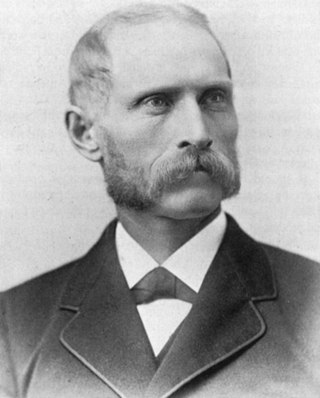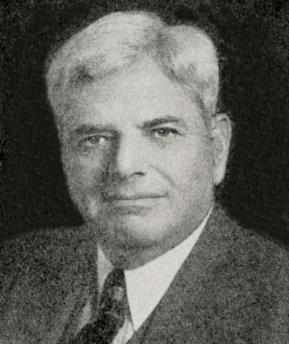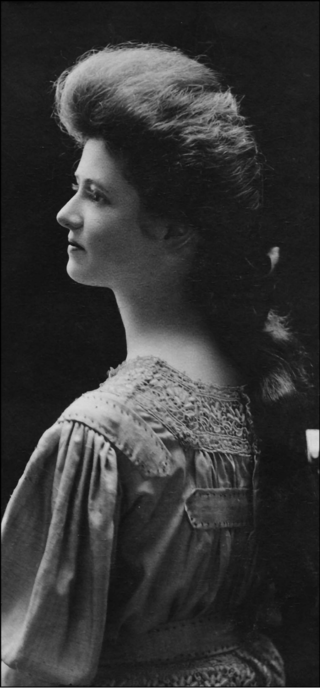
Herpetology is the branch of zoology concerned with the study of amphibians and reptiles. Birds, which are cladistically included within Reptilia, are traditionally excluded here; the scientific study of birds is the subject of ornithology.

John Treadwell Nichols was an American ichthyologist and ornithologist.

Samuel Walton Garman, or "Garmann" as he sometimes styled himself, was an American naturalist and zoologist. He became noted as an ichthyologist and herpetologist.

Laurence Monroe Klauber, was an American herpetologist and the foremost authority on rattlesnakes. He was the first curator of reptiles and amphibians at the San Diego Natural History Museum and Consulting Curator of Reptiles for the San Diego Zoo. He was also a businessman, inventor, and contributed to mathematics in his study of the distribution of prime numbers.
Roger Conant was an American herpetologist, author, educator and conservationist. He was Director Emeritus of the Philadelphia Zoo and adjunct professor at the University of New Mexico. He wrote one of the first comprehensive field guides for North American reptiles in 1958 entitled: A Field Guide to Reptiles and Amphibians of Eastern and Central North America, in the Peterson Field Guide series.

Ichthyology & Herpetology is a quarterly peer-reviewed scientific journal covering research in ichthyology and herpetology that was originally named after Edward Drinker Cope, a prominent American researcher in these fields. It is the official journal of the American Society of Ichthyologists and Herpetologists. According to the Journal Citation Reports, Copeia has a 2021 impact factor of 1.857, ranking it 65th out of 176 journals in the category "Zoology".
Karl Patterson Schmidt was an American herpetologist.

Helen Beulah Thompson Gaige was an American herpetologist, curator of Reptiles and Amphibians for the Museum of Zoology at the University of Michigan, and a specialist in neotropical frogs.
David Burton Wake was an American herpetologist. He was professor of integrative biology and Director and curator of herpetology of the Museum of Vertebrate Zoology at the University of California, Berkeley. Wake is known for his work on the biology and evolution of salamanders as well as general issues of vertebrate evolutionary biology. He has served as president of the Society for the Study of Evolution, the American Society of Naturalists, and American Society of Zoologists. He was a member of the American Association for the Advancement of Science, the Linnean Society of London, the American Academy of Arts and Sciences, the American Philosophical Society, and in 1998 was elected into the National Academy of Sciences. He was awarded the 2006 Leidy Award from the Academy of Natural Sciences of Philadelphia.

Doris Mable Cochran was an American herpetologist and custodian of the American Natural Collection at the Smithsonian Institution in Washington, D.C., for many years.

Worth Hamilton Weller was an American herpetologist who discovered two new salamanders, Gyrinophilus porphyriticus duryi and Weller's salamander.
J. Whitfield "Whit" Gibbons is an American herpetologist, author, and educator. He is Professor Emeritus of Ecology, University of Georgia, and former Head of the Environmental Outreach and Education program at the Savannah River Ecology Laboratory (SREL).

Robert Frederick Inger was an American herpetologist. During his lifetime, he wrote numerous books and publications about herpetology. He was also the curator for amphibians and reptiles at the Field Museum in Chicago, Illinois.
Richard Bruce Bury, a pioneer in the study of herpetofauna, is an American conservationist, herpetologist, and natural historian and Scientist Emeritus of the United States Geological Survey. Bury, C. Kenneth Dodd, Jr. and Gary Fellers were the first to suggest widespread amphibian declines were progressing. In 1972, Bury became the first person hired by the United States Department of the Interior under the specific title of Herpetologist. In 2009, the American Society of Ichthyologists and Herpetologists (ASIH) made Bury the 11th herpetologist awarded the annual Henry S. Fitch Award for Excellence in Herpetology. Bury is a founding governing board member and executive editor of the journal Herpetological Conservation and Biology. For more than 30 years, Bury has studied herpetofauna ecology and conservation, including the effects of invasive species and wildfire on populations. Thanks in part to his efforts, herpetofauna are recognized as important indicators of ecosystem health.
Joseph Thomas Collins, Jr. was an American herpetologist. A graduate of the University of Cincinnati, Collins authored 27 books and over 300 articles on wildlife, of which about 250 were on amphibians and reptiles. He was the founder of the Center for North American Herpetology (CNAH). He died while studying amphibians and reptiles on St. George Island, Florida on 14 January 2012. "For 60 years I was obsessed with herpetology," Joe Collins claimed.
C. Kenneth Dodd Jr., is an American herpetologist and conservationist. He earned his Ph.D. under Edmund D. Brodie Jr. from Clemson University in 1974. From 1976 to 1984 he worked in the research division of the U.S. Fish and Wildlife Service, then he transferred to the U.S. Geological Survey in 1984, where he remained until his retirement in 2007. He is currently Courtesy Associate Professor in the Department of Wildlife Ecology and Conservation, University of Florida and an Affiliate of the Florida Museum of Natural History. He has published over 200 papers, reviews and books. Much of his research focuses on turtle and amphibian ecology/conservation. He, along with R. Bruce Bury and Garry Fellers were the first to suggest widespread amphibian declines were progressing. He is a nationally recognized herpetologist.

Darrel Richmond Frost is an American herpetologist and systematist. He was previously head curator of herpetology at the American Museum of Natural History, as well as president of both the Society for the Study of Amphibians and Reptiles (1998) and the American Society of Ichthyologists and Herpetologists (2006). Four taxa are named in his honor: the toad genus Frostius, the tree frog Dendropsophus frosti, Darrel's Chorus Frog Microhyla darreli, and Frost's arboreal alligator lizard Abronia frosti.

Mary Cynthia Dickerson was an American herpetologist and the first curator of herpetology at the American Museum of Natural History, as well as the first curator in the now defunct department of Woods and Forestry. For ten years she was the editor of The American Museum Journal, which was renamed Natural History during her editorship. She published two books: Moths and Butterflies (1901) and The Frog Book (1906) as well as numerous popular and scientific articles. She described over 20 species of reptiles and is commemorated in the scientific names of four lizards.

Maureen Ann Donnelly is an American herpetologist based at Florida International University.
Margaret "Meg" McBride Stewart was an American herpetologist, known for her research on the amphibians of Malawi, the Caribbean, and the United States. She was a professor at the State University of New York at Albany. She served as president of the American Society of Ichthyologists and Herpetologists and the Society for the Study of Amphibians and Reptiles. The puddle frog Phrynobatrachus stewartae was named in her honour.











